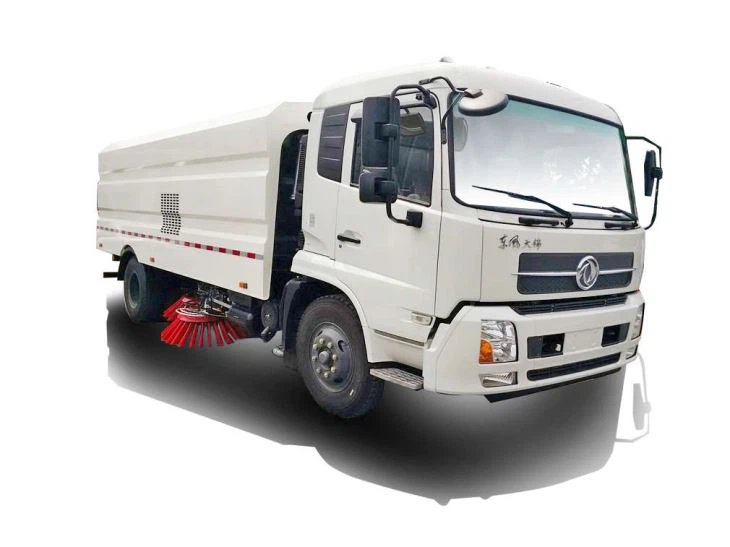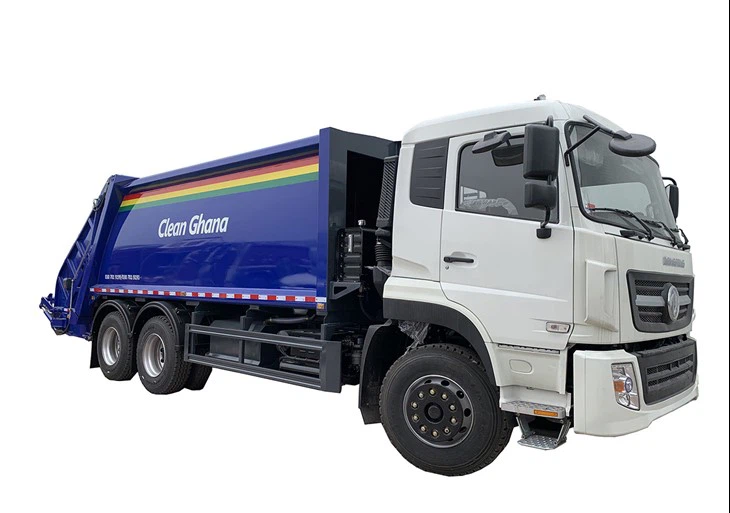Understanding Garbage Truck Beds: Design, Functionality, and Maintenance

Garbage trucks play a crucial role in waste management, ensuring that our communities remain clean and livable. One of the most important components of these vehicles is the garbage truck bed, which is designed to efficiently collect, transport, and dispose of waste. In this article, we will delve deeply into the various aspects of garbage truck beds, exploring their design, functionality, maintenance, and more, to provide a comprehensive understanding for readers.
The Importance of Garbage Truck Beds
Garbage truck beds are not just simple storage areas; they are complex systems designed for specific purposes. They need to balance efficiency, safety, and usability. The effectiveness of a garbage collection operation relies heavily on the design and functionality of the truck bed.
Key Functions of a Garbage Truck Bed
- Waste Collection: The primary function is to efficiently collect waste from different sources.
- Transport: It serves as the means to transport waste to disposal or transfer locations.
- Compaction: Some truck beds are designed to compact waste to optimize space and reduce trips.
- Prevent Spillage: The design helps to prevent the spillage of waste during transport.
Types of Garbage Truck Beds
There are several types of garbage truck beds, each designed for specific waste management tasks. Understanding these can help municipalities and waste management companies choose the right vehicle for their operations.
Rear-Loader Garbage Trucks
Rear-loader trucks have beds that allow waste to be picked up from the rear. They typically have a hopper for loading bins directly into the truck bed.
Advantages
- Efficient for residential waste collection.
- Can be operated by a single person, reducing labor costs.
Disadvantages

- May require additional maneuvering space.
- Longer loading times compared to other types.
Side-Loader Garbage Trucks
These trucks allow waste to be loaded from the side, and are often equipped with an automated arm for ease of use.
Advantages
- Improves efficiency and safety in urban settings.
- Can operate in narrow streets.
Disadvantages
- Higher initial investment.
- Requires more maintenance due to the mechanical arm.
Front-Loader Garbage Trucks
These trucks are designed for commercial waste collection and feature a bed that allows garbage bins to be loaded from the front.
Advantages
- High capacity for commercial waste.
- Quick loading and unloading capabilities.
Disadvantages
- Not suitable for residential areas.
- Higher cost of operation.
Key Features of Garbage Truck Beds
Garbage truck beds incorporate several important features that enhance their functionality. Here are key components to consider:
Material
The material used in the construction of a garbage truck bed is critical for durability and maintenance. Common materials include:
| Material | Benefits | Drawbacks |
|---|---|---|
| Steel | High durability, strong support | Prone to rust |
| Aluminum | Lightweight, resistant to corrosion | Less durable than steel |
| Composite Materials | Lightweight, resistant to damage | Can be expensive |
Size and Capacity
The size of the garbage truck bed directly affects how much waste can be collected in a single trip. It’s important for municipal and waste management companies to assess their waste collection needs accurately.
Compaction Systems
Many garbage truck beds today are equipped with compaction systems that reduce the volume of waste. This increases efficiency and allows for more waste to be collected in fewer trips.
Maintaining Garbage Truck Beds
Proper maintenance of garbage truck beds is crucial to ensure longevity and efficiency. Here are some maintenance tips:
Regular Inspections
Regular inspections help identify wear and tear, ensuring that issues are caught early before they escalate. Key areas to inspect include:
- Compaction mechanisms
- Seals and gaskets
- Bed integrity and signs of rust
Cleaning
Maintaining a clean truck bed is important not only for hygiene but also for the vehicle’s performance. Here are steps to keep a garbage truck bed clean:
- Schedule regular washes to remove waste residue.
- Inspect for pests and clean any remaining waste promptly.

Lubrication
Moving parts in the truck bed need lubrication to function smoothly. This should be done according to the manufacturer’s recommendations.
Safety Considerations for Garbage Truck Beds
Safety is paramount in waste management operations. Here are some safety measures related to garbage truck beds:
Training Operators
Operators should receive safety training specific to the operation of the garbage truck bed. Topics should include:
- Proper loading techniques
- Traffic safety while collecting waste
- Emergency procedures

Personal Protective Equipment (PPE)
Operators should wear appropriate PPE, including gloves, safety glasses, and steel-toe boots, to protect against hazards.
Future Trends in Garbage Truck Bed Design
As technology continues to evolve, garbage truck beds are also undergoing advancements. Some future trends include:
Automation and Robotics
With the rise of automation in various industries, garbage truck beds may increasingly feature robotic arms or automated systems for loading and unloading, enhancing safety and efficiency.
Eco-Friendly Materials
There is a push towards using sustainable materials for the construction of garbage truck beds to minimize environmental impacts.
Cost Considerations
When selecting a garbage truck bed, it is vital to consider the costs associated with purchase, operation, and maintenance. Key factors include:
Initial Purchase Price
The initial investment can vary significantly based on the type of truck and features chosen. Weighing the long-term benefits against the upfront costs is crucial.
Operating Costs
These can include fuel, maintenance, and labor costs, which should be estimated carefully to budget effectively.
FAQ Section
What materials are commonly used for garbage truck beds?
Garbage truck beds are commonly made from steel, aluminum, or composite materials, each with its advantages and disadvantages.
How often should I maintain a garbage truck bed?
Regular inspections should be conducted every few weeks, with more comprehensive maintenance performed at least twice a year, or as recommended by manufacturers.
What safety features should a garbage truck bed have?
Safety features can include proper lighting, reflective markings, and a well-functioning compaction system to prevent accidents during operation.
Are there automated garbage truck beds available?
Yes, many modern garbage trucks are equipped with automated systems for loading and unloading, making them more efficient and safe.
What are the benefits of using compaction systems in garbage truck beds?
Compaction systems help reduce the volume of waste, allowing for more efficient collection and fewer trips to disposal sites.
How can I choose the right garbage truck bed for my waste management needs?
Assess your waste management requirements, consider the types of waste being collected, and evaluate the space available for maneuvering to determine the best truck bed type for your operations.
